
views
X
Research source
Applying for Dual Citizenship Under RA 9225

Locate the nearest Philippine consulate. The Philippine consulate nearest you processes your application for dual citizenship. You must appear in person at the consulate at least once to take your oath. In some areas, you may have to travel a considerable distance. You can find the nearest consulate by calling or visiting the website of the Philippine embassy in your country. In the US, there are 10 consular offices, each with its own regional jurisdiction. If you live in the US, you can use the map to find information about the consular office that can assist you with your dual citizenship application.
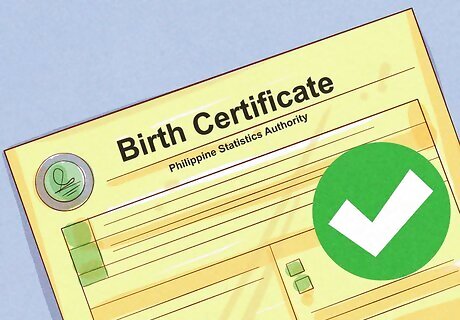
Obtain verified proof of former Filipino citizenship. If you were born in the Philippines, you need an original and 2 copies of your birth certificate issued by the Philippine Statistics Authority. If you are a married woman, you must also provide an original and 2 copies of your marriage certificate if you changed your surname after marriage. You can order a verified copy of your birth certificate at https://www.psaserbilis.com.ph/Default.aspx. If the Philippine Statistics Authority does not have a record of your birth, you must apply for late registration of birth at the local civil registrar where you were born before you can apply for dual citizenship. If you still have your most recent Philippine passport, bring it as well. If you don't, prepare a notarized affidavit explaining the loss of your passport. You can download a form for the affidavit at http://www.philippineconsulatela.org/wp-content/uploads/2015/11/02c-Ppt_Affidavit_of_Loss-3.pdf.
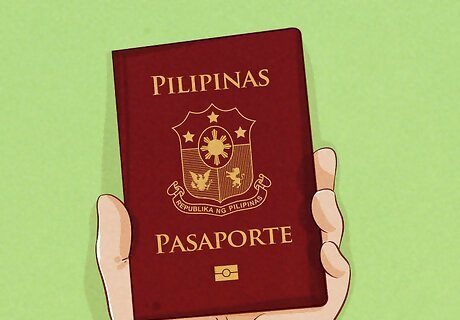
Gather documents to prove your current foreign citizenship. Show your foreign passport to prove your foreign citizenship. You should also provide your naturalization certificate or other document proving that you obtained citizenship in the foreign country. Your naturalization certificate or other citizenship document must include an identification number for the certificate and the date you obtained citizenship.
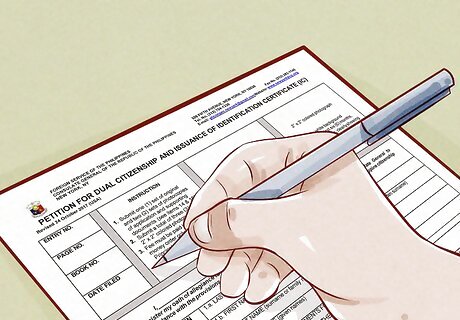
Complete the dual citizenship application form. The application form requires information about yourself, your Filipino citizenship, and your foreign citizenship. All of this information must be backed up with supporting documentation. You can download the application form at http://www.newyorkpcg.org/images/stories/Forms/UPDATED%20DUAL%20CITIZENSHIP%20Application%20Form.pdf or request it from your nearest consulate. Along with the form, you'll get a checklist of required supporting documents. Use this as a guide to make sure you have the documents you need, but don't fill it in. It must be completed by authorized personnel at the consulate.Tip: The application form has space for passport photos. Some consulates ask you to have those photos taken yourself, while others require your passport photos to be taken at the consulate when you take your oath.

Go to the nearest Philippine consulate in person to take the oath. The Consul General or another foreign service officer at the consulate administers the oath to you in person after reviewing your application and supporting documents. You may have to make an appointment to be seen, so it's best to call the consulate ahead of time – especially if you have to travel. The consulate requires you to dress in proper attire. Business dress is suitable. T-shirts, shorts, tank tops, flip-flops, and similar casual clothing are not considered acceptable. You must pay the fee listed on the application. The consulate accepts cash or postal money orders. The consulate will give you a receipt. Save this – you will need to present it when you return to pick up your passport.
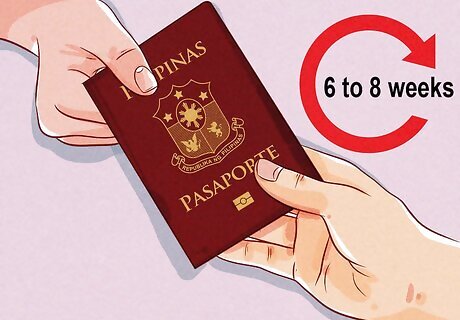
Pick up your passport in 6 to 8 weeks. The consulate will notify you when your passport is ready. You can travel to the consulate and pick it up in person or you can send an authorized representative to pick it up for you. You can also have the consulate mail your passport to you. If you want it mailed, bring a self-addressed stamped envelope with you when you go to take the oath. If you have someone else pick up your passport for you, they must have a letter of authorization and a notarized power of attorney, as well as copies of your valid government-issued photo ID, their own valid government-issued photo ID, and your passport receipt.
Reporting the Birth of a Filipino Abroad

Locate the Philippine consulate with appropriate jurisdiction. You can only report the birth of a Filipino child born in another country at the regional consulate that has jurisdiction over the geographical area where the child was born. To find the correct consulate, call the Philippine embassy in the country where the child was born, or visit the embassy's website.Tip: You must report the birth within 12 months. If you fail to report the birth within 12 months, you can still register the child's birth, but you must be able to explain the reason for the delay.
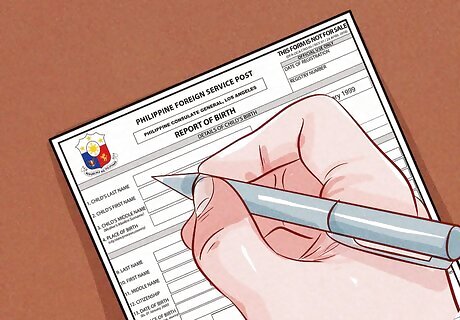
Get 4 originals of the Report of Birth form filled out. The Report of Birth form can be filled out by the attending physician, an attending nurse or midwife, or the child's Filipino parents. The foreign parent can also fill out the form, but only if no one else is available to do it. You can download a blank copy of the Report of Birth form at https://www.philippineconsulatela.org/wp-content/uploads/2019/04/REPORT-OF-BIRTH-1.pdf, or you can get them from the consular office.
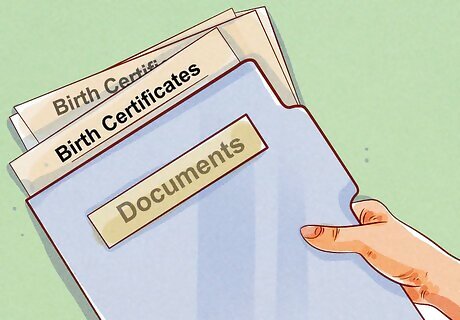
Gather copies of the child's and parents' birth certificates. Present 1 original and 4 copies of the birth certificate that was issued for the child by the local health authority. Additionally, you need the original and 4 copies of the father's and mother's birth certificates. If either or both of the parents are Philippine citizens, the birth certificates you present must be the ones issued by the Philippine Statistics Authority. You can request your birth certificate at https://psaserbilis.com.ph/default.aspx.
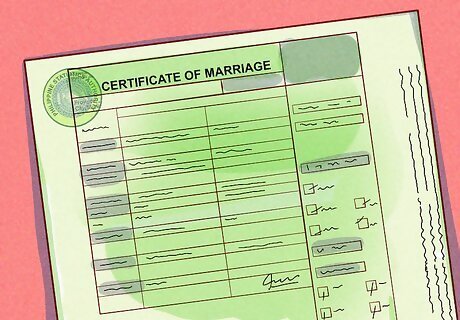
Include copies of the parents' marriage certificate if applicable. If you are married, provide an original and 4 copies of your marriage certificate. If you were married in the Philippines or reported a foreign marriage to a Philippine consulate, your marriage certificate must be issued by the Philippine Statistics Authority. If you aren't married but the child is going to carry the father's name, the father must submit an affidavit of paternity and use of surname form. You can download this form at http://www.philippineconsulatela.org/wp-content/uploads/2015/11/AFFIDAVIT-OF-PATERNITY-AND-USE-OF-SURNAME.pdf. If you get married at some point after the child is born, you must submit a notarized joint affidavit of legitimation. You can download the blank form at http://www.philippineconsulatela.org/wp-content/uploads/2015/11/JOINT-AFFIDAVIT-OF-LEGITIMATION.pdf.

Submit the application and supporting documents to the consulate. Your application and documents must be submitted to the Philippine consulate with jurisdiction over the geographic area where the child was born. You can either mail the package of documents or take it to the consular office in person. Include the fee with your application. Contact the consulate in your area to find out the fee amount. As of 2019, the fee is $25 to report the birth of a child born in the US. The consulate accepts cash or postal money orders. If you are sending your documents through the mail, include a postal money order. Do not send cash through the mail.












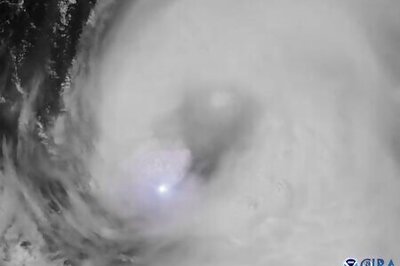





Comments
0 comment